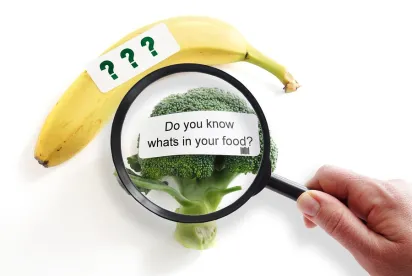In late January, when hundreds of millions of Chinese traveled back to their hometown to celebrate the start of 2020, the Year of the Rat, no one could have ever imagined what the next weeks and months would bring. Today, while China is moving in the right direction and taking steps to virtually eliminate the spread of COVID-19, there remains much uncertainty about the future. What is clear, however, is that the outbreak is no longer limited to China, it's now global. The short and long-term impact of COVID-19 will leave an imprint on our lives for months and likely years to come and there will no doubt be much commentary written about the damage it has caused. While we cannot ignore the impact The Year of the Rat will have on global food safety, let's remain hopeful for a speedy, healthy global recovery and, for now, like we do every year around this time, reflect back on the regulatory developments on the food side that occurred during 2019, the Year of the Pig.
In 2019, to accommodate China's restructured governance system, the food authorities carried out further consolidation and updated relevant food safety regulations and standards. With an emphasis on enhancing food safety and hygiene controls within the food manufacturing process and post-market surveillance, many new regulations and standards were announced, including the long-awaited Implementation Regulations of the Food Safety Law[1]. This article provides a recap of some of these laws and highlights requirements imposed on companies operating in China.
I. Prior to Export: Eligibility of Manufacturer and Product
In November 2019, the Chinese General Administration of Customs (GAC) issued the revised Draft Management Rules for the Registration of Overseas Production Enterprises of Imported Food (hereinafter "Registration Regulation")[2], which proposed to expand the current registration requirement for overseas food manufacturing facilities to, potentially, all food categories. Currently, only certain types of imported food products on the inventory are subject to overseas manufacturer registration, e.g., dairy products, aquatic products, etc. The draft Registration Regulation expands the facility registration scope from the current inventory-based food to a wider range based on risk assessment, which is still subject to further implementation details. If finalized as proposed, overseas companies will have to take additional measures to ensure its facilities are registered before the food can be exported to China. Details of China's draft Registration Regulation were previously reported in Keller and Heckman's China Regulatory Matters (CRM) newsletter in December 2019 - Breaking News: China Proposes New Facility Registration Requirements for Overseas Food Producers.
In the meantime, the Chinese authority is ready to expand on-site inspection on overseas manufacturers of special foods (e.g., infant formula, food for special medical purpose, health food, dietary supplements) echoing their commitment on the control of food manufacturing process. Under the State Administration of Market Regulation (SAMR)'s Draft Interim Measures on the Special Food Registration On-Site Inspection[3] issued in July 2019, Chinese officials are authorized to visit and inspect the manufacturing sites of special foods outside China, during which the primary documents subject to review must be made available in Chinese.
In parallel to the exportation of food via traditional trade model, the Chinese government announced an updated positive List of Products Eligible for Cross-border E-Commerce (2019 Edition)[4] by authorizing more food products for CBEC business model. Added items are mainly aquatic products and alcoholic drinks. Also, the State Council in December 2019 added 24 new cities[5] as CBEC Pilot Cities, meaning CBEC products may be imported into China via any of these cities, which give more flexibility to the industry. More details of importing foods via CBEC can be found in our CRM - Beijing Confirms Cross Border E-Commerce is Here to Stay.
II. Product Considerations: Food Specifications and Food Labeling
1. Food Specifications
National food safety standards are mandatory standards in China that regulate various aspects of food safety, e.g., technical specifications. In 2019, the National Health Commission (NHC) released a range of important draft food safety national standards for industry comments[6], among them are GB 2761 Maximum Residue Limit of Mycotoxin in Food[7]; GB 2762 Maximum Residue Limit of Contaminant in Food[8]; GB 29921 Maximum Residue Limit of Pathogens in Prepackaged Food[9]; GB7718 Labeling for Prepackaged Foods; GB5420 Standard of Cheese[10]; GB13102 Condensed Milk[11]; GB29923 GMP Rules for Foods for Special Medical Purpose,[12] etc.
Other national standards have been amended in 2019. For instance, in August 2019, SAMR issued the national standard GB/T 19630-2019 organic product standard[13], and in November 2019, the Certification and Accreditation Administration (CNCA) released the updated standards Organic Product Certification Implementation Rules[14] and Organic Product Certification Inventory[15], which are now important regulatory references for businesses engaged in exporting organic food to China.
China also has established separate rules to regulate special foods, which remain a high priority on SAMR's agenda. When exporting a special food to China, it is very important to consider the applicable requirements. For example, for health food, several new regulations were announced, such as the Management Measures for the Inventories of Health Food Raw Materials and Function Claims[16]; Supplementary Material List for Health Food Notification Products[17]; Guidance on Health Food Naming (2019) [18];Draft Standards for Hygiene Physical and Chemical Examination of Health Food[19]; and Draft Rules for the Application and Review of Probiotic Health Food[20]. These requirements will substantively shape the upcoming review and approval of health food in China. We will report more details in a separate CRM specific to health food in China later this year.
2. Food Labeling Requirements
When speaking about the requirements imposed on an exported food, one cannot overlook the requirements that relate to the label. On October 1, 2019, GAC issued an announcement[21] to revoke prepackaged food labeling notification for first shipments, under which industry is no longer obligated to file a label notification with the Chinese authority for the imported food. Instead, the labeling of imported food will be randomly sampled and examined by the agency. While this is likely to increase the efficiency of import inspection on imported food, manufacturers should remain vigilant to assure compliance with the Chinese labeling requirements because, even if a product is not sampled and inspected during the import process, SAMR can sample the product and perform a labeling compliance check after the product is placed on the market.
Toward this end, in 2019, China announced amendments to the food labeling regulation and standard, e.g., Draft Measures for Supervision and Administration of Food Labeling [22], and Draft GB7718 General Rules for the Labeling of Prepackaged Foods[23]. These are the primary documents governing the labeling of prepackaged foods (e.g., ingredient declaration, date marking, claims, product name, etc.) administered by SAMR and NHC, respectively. However, the proposed drafts are not entirely consistent, and we hope to see the authority issue final, more consistent versions in 2020. More details of the two draft labeling documents may be found in our CRM Alert- Are You Ready for China's New Food Labeling Requirements?
Apart from the general food labeling, one must also consider nutrition labeling under the food safety national standard GB28050.[24] The government has been working on amending GB28050 for several years and its revisions will likely take into account Healthy China Operation 2030[25], a national plan expected to introduce significant changes related to health and nutrition. For example, more nutrients (e.g., sugar content) may be subject to mandatory declaration on the label, front-of-pack (FOP) labeling may be encouraged, "Healthy Choice" logo may be considered, serving size is to be established, and "low sugar" and "free sugar" claims are to be promoted. However, to date, the government has not officially released a revised draft of GB28050 for public consultation. We hope to see this standard published in 2020.
III. Post-Market Considerations
Complying with all applicable requirements to manufacture and bring food into the market is not the end of the story. There are many post-market regulatory issues to consider. In fact, many regulatory challenges can arise after product leaves the port of entry. As noted at the outset of this article,the revised Implementation Regulation of the Food Safety Law (FSL)[26] was finally announced and came into effect on December 1, 2019. Many revised provisions in the Implementation Regulation are intended to strengthen accountability of food law violators. For example, the government will penalize individuals based on income received from the company. More specifically, a legal representative of the company, the main person in charge, and the person held directly responsible can be fined up to 10 times their previous year's income. Please see more details in our CRM Alert- Breaking News: China Publishes Long-Awaited Food Safety Law Implementation Regulation.
On the other hand, the Implementation Regulation details the administrative discretion in law enforcement consistent with China's "open-up" business policy. For instance, a food producer or its business operators who proactively stop production, voluntarily implement food recalls, or take other effective measures to avoid or eliminate food safety risks without causing harmful consequences, will likely receive a more lenient punishment. Notably, under China's "blacklist" system, powered by a national credit database that tracks the record of business entities, a food producers/operators credit information is associated with its market admission and financing. Meaning, compliance with China's food laws is inherently linked to the national credit system and, thus, negative credit could impact a company's business activities in China.
More clarity was given on November 11, 2019, when the Supreme Court of China issued Interpretation of Law Application in the Trial of Civil Disputes over Food Safety on Food Safety.[27] The Court established critical legal definitions involving food safety civil cases. For example, the food safety law bases its 10-times damages on the fact that one is knowingly selling food that is not in compliance with China's food safety standards; the Interpretation defines "knowingly" which should provide guidance to the food industry when defending lawsuits.
In addition to the government bringing actions against food manufacturers for product it sells in China, the public also has been encouraged to "supervise" the food industry's compliance with the laws. The right to "supervise" has led to a growing number of individuals and groups, known as "professional consumers", to cause a good amount of disruption on businesses. These are individuals or groups of individuals who are not bona fide purchasers and who, instead, seek to take advantage of the 10-times damage clause under the FSL. They are trained to look for non-compliant product, most of which are not related to safety, e.g., incorrect font size on the label, and bring action, usually against the "deep pocket" foreign company, to the local FDA authority to collect damages. These actions typically come in high volume and are repeated by the same professional consumer in multiple provinces. Over the past few years, professional consumers have raised a substantial amount of groundless assertions against food companies - wasting the resources of government and industry. As a result, in 2019, SAMR issued the Interim Measures for Handling Complaints and Reports[28], which clarified that reports should not be accepted if the complainants do not purchase the products for daily consumption, suggesting those filing complaints looking merely for 10 times damages will no longer prevail.
IV. Future Considerations
The 2018 institutional reshuffle of the Chinese food regulatory regime went through its second year and is expected to be completed at all levels in 2020. Many more laws, regulations and standards will be updated to reflect the changes in the competent authorities and recent food policies developed by the central government. For example, the national standard for nutrition fortification GB14880[29] is currently under review and its revisions are taking into account the above-noted Healthy China Operation 2030 national plan, under which the policy "Three Reductions," i.e., Reduced sugar, Reduced salt and Reduced fat, is expected to bring far-reaching implications on associated legislation under amendment from food nutrition labeling, advertising, to nutrition fortification. Further rules will be introduced to regulate foods high in fat, sugar, and salt to guide the public to a healthier diet.
The recent signing of the Phase I trade deal between China and the United States is expected to result in new legislation and the revision of existing regulations to implement some of the agreements made in the trade deal. Many food sectors in this regard are likely to be affected, such as infant formula, genetically modified food ingredients, dairy products, etc. For instance, in early March, in accordance with the Phase I trade agreement, NHC issued a notice which is intended to approve a new product standard for American dairy permeate powder. It is worthwhile to monitor the food regulatory developments derived from the trade deal throughout 2020 as some of these are likely to open new market opportunities for the industry.
Perhaps the most important regulatory action in 2020 was announced on February 26 in response to the COVID-19 outbreak when the Standing Committee of the National People's Congress (NPC) issued the Decision on thoroughly banning the illegal trading of wildlife and eliminating the consumption of wild animals to safeguard people's lives and health[30], which broadens the illegal consumption and trade of wild animals.We will likely see more government intervention in this regard over the course of time.
__________________
[1] http://www.gov.cn/zhengce/content/2019-10/31/content_5447142.htm. Please see details in our CRM Alert- Breaking News: China Publishes Long-Awaited Food Safety Law Implementation Regulation.
[2]《进口食品境外生产企业注册管理规定(征求意见稿)
http://www.cfda.com.cn/newsdetail.aspx?id=127166
[3]《市场监管总局关于公开征求《特殊食品注册现场核查工作规程(暂行)(征求意见稿)》意见的公告》
http://www.samr.gov.cn/hd/zjdc/201907/t20190717_304843.html
[4]《关于调整扩大跨境电子商务零售进口商品清单的公告》
http://gss.mof.gov.cn/gzdt/zhengcefabu/201912/t20191227_3451448.htm
[5]《国务院关于同意在石家庄等24个城市设立跨境电子商务综合试验区的批复》
http://www.gov.cn/zhengce/content/2019-12/24/content_5463598.htm
[6]《食品安全国家标准审评委员会秘书关于征求食品中污染物限量等13项食品安全国家标准(征求意见稿)意见的函》
http://www.nhc.gov.cn/sps/s7891/201912/30e2c7d8dc7d4f96b8118f5513529d97.shtml
[7]《食品安全国家标准食品中真菌毒素限量》
[8]《食品安全国家标准食品中污染物限量》
[9]《食品安全国家标准预包装食品中致病菌限量》
[10]http://www.nhc.gov.cn/sps/s3594/201905/75cace1972ca4546bc0e856234a93531.shtml
[11]http://www.nhc.gov.cn/sps/s3594/201905/75cace1972ca4546bc0e856234a93531.shtml
[12]http://www.nhc.gov.cn/sps/s7891/201907/5085f53796994627aff733b8a892c236.shtml
[13]《GB/T 19630-2019有机产品生产、加工、标识与管理体系要求》
http://openstd.samr.gov.cn/bzgk/gb/newGbInfo?hcno=6C7830BA57AF12ACE93AF43B8CA7B315
[14]《认监委关于发布新版《有机产品认证实施规则》的公告》
http://www.cnca.gov.cn/xxgk/ggxx/2019/201911/t20191112_57457.shtml
[15]《认监委关于发布新版《有机产品认证目录》的公告》
http://www.cnca.gov.cn/xxgk/ggxx/2019/201911/t20191112_57458.shtml
[16]《保健食品原料目录与保健功能目录管理办法》
http://gkml.samr.gov.cn/nsjg/fgs/201908/t20190820_306117.html
[17]《市场监管总局关于发布《保健食品备案产品可用辅料及其使用规定(2019年版)》的公告》
http://gkml.samr.gov.cn/nsjg/tssps/201911/t20191106_308220.html
[18]《市场监管总局关于发布《保健食品命名指南(2019年版)》的公告》
http://gkml.samr.gov.cn/nsjg/tssps/201911/t20191112_308443.html
[19]《市场监管总局关于征求《保健食品卫生学理化检验规范(征求意见稿)》意见的公告》
http://gkml.samr.gov.cn/nsjg/tssps/201906/t20190614_302395.html
[20]《国家市场监督管理总局公开征求《益生菌类保健食品申报与审评规定(征求意见稿)》意见》
http://gkml.samr.gov.cn/nsjg/tssps/201903/t20190321_292236.html
[21]《海关总署公告2019年第70号(关于进出口预包装食品标签检验监督管理有关事宜的公告)》
http://www.customs.gov.cn/customs/302249/302266/302269/2393416/index.html
[22]《食品标识监督管理办法征求意见稿》
http://www.moj.gov.cn/government_public/content/2019-11/21/657_3236134.html
[23]《食品安全国家标准预包装食品标签通则》
[24]《食品安全国家标准预包装食品营养标签通则》
http://www.nhc.gov.cn/ewebeditor/uploadfile/2013/02/20130204161215710.pdf
[25]http://www.gov.cn/xinwen/2019-07/15/content_5409694.htm
[26] 《中华人民共和国食品安全法实施条例》
http://www.gov.cn/zhengce/content/2019-10/31/content_5447142.htm
[27]《关于审理食品安全民事纠纷案件适用法律若干问题的解释》(征求意见稿)
http://courtapp.chinacourt.org/zixun-xiangqing-198501.html
[28]《投诉举报处理暂行办法》
http://gkml.samr.gov.cn/nsjg/fgs/201912/t20191202_308963.html
[29]《食品安全国家标准食品营养强化剂使用标准》
http://www.nhc.gov.cn/ewebeditor/uploadfile/2013/06/20130605103746593.pdf
[30]《全国人民代表大会常务委员会关于全面禁止非法野生动物交易、革除滥食野生动物陋习、切实保障人民群众生命健康安全的决定》
http://www.npc.gov.cn/npc/c30834/202002/c56b129850aa42acb584cf01ebb68ea4.shtml






 />i
/>i
